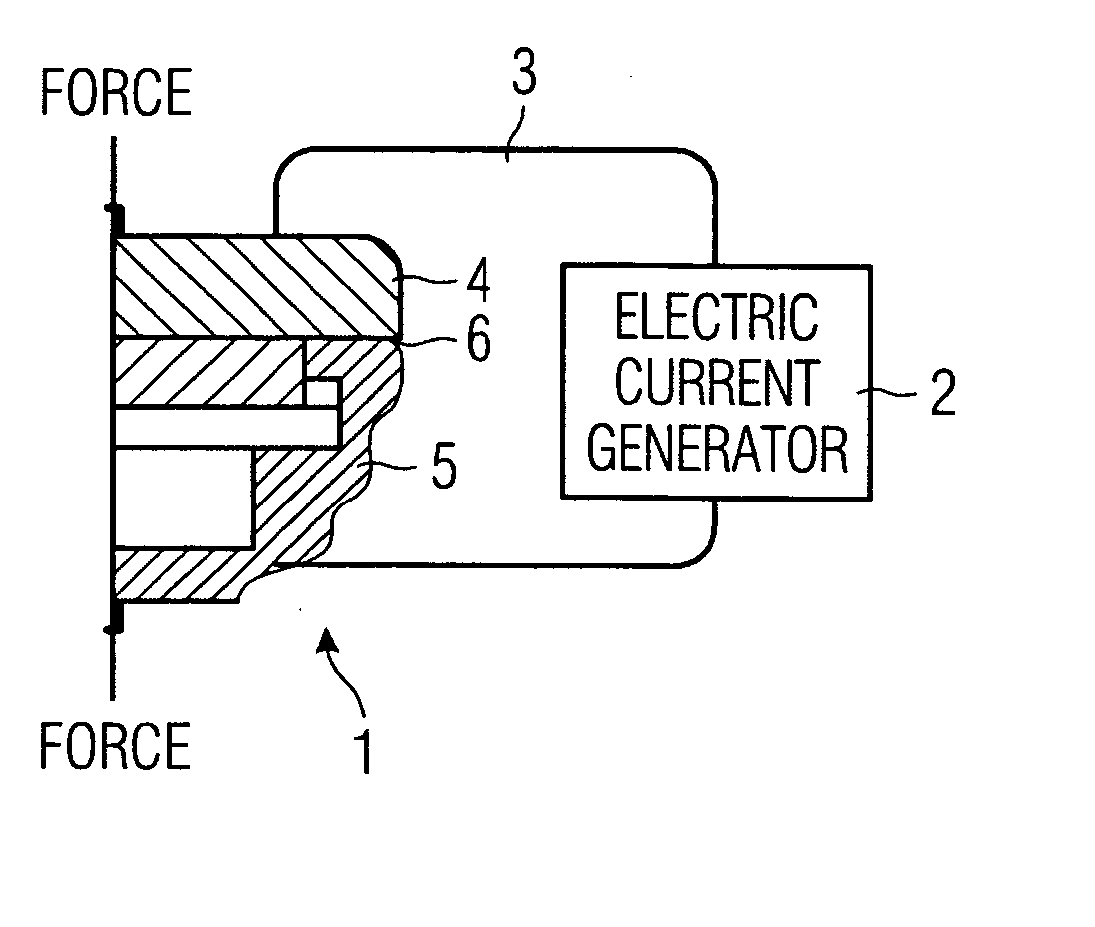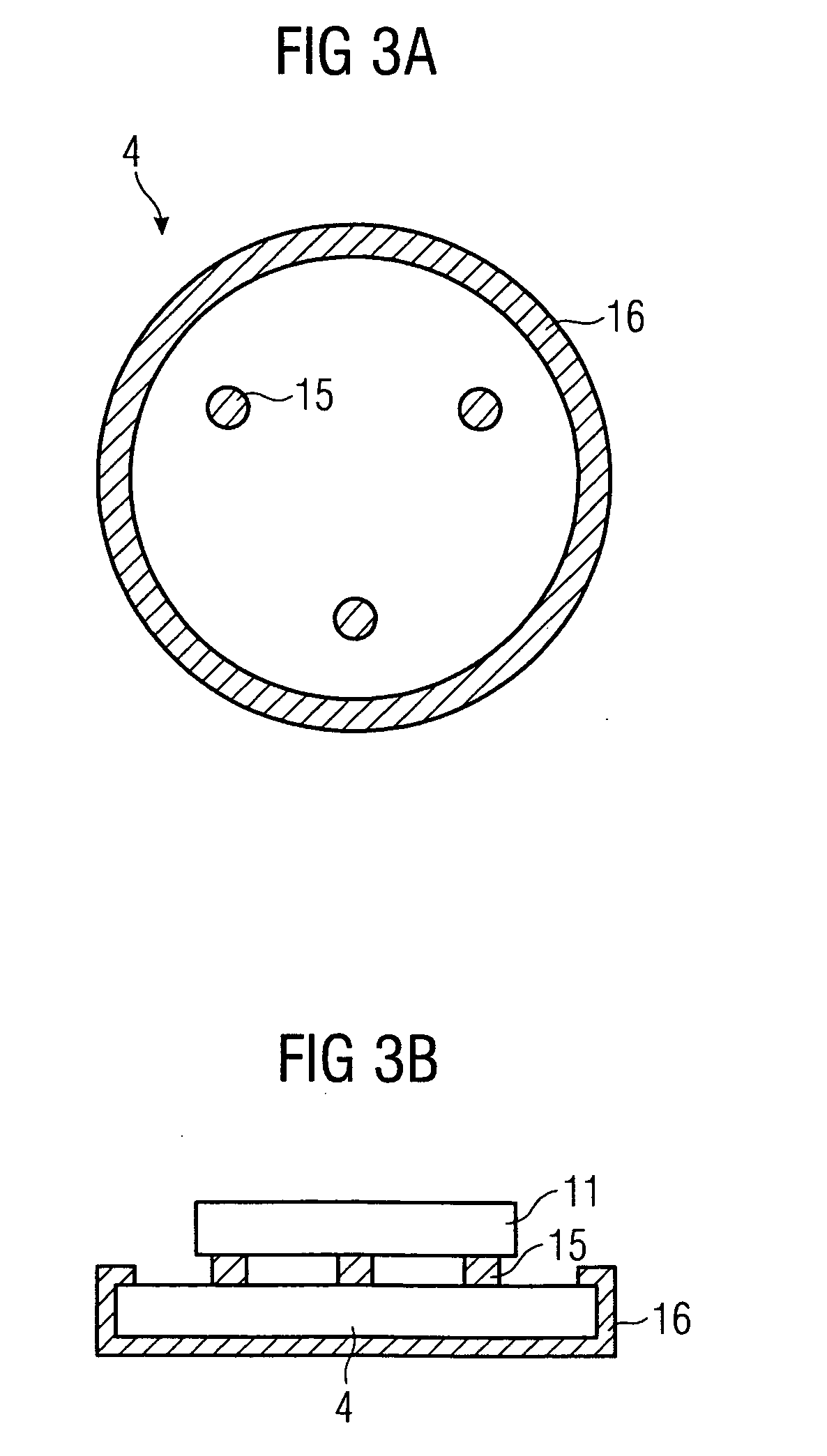Ultrasonic transducer and method of joining an ultrasonic transducer
a transducer and ultrasonic technology, applied in the field of ultrasonic transducers, can solve the problems of not being used for e.g. copper alloys, not being used for joining materials, and the acoustic intermediate layer, which is usually placed between the plate and the disc, etc., to achieve the effect of reducing heat input, improving tightness, and simplifying manufacturing
- Summary
- Abstract
- Description
- Claims
- Application Information
AI Technical Summary
Benefits of technology
Problems solved by technology
Method used
Image
Examples
Embodiment Construction
[0022]FIG. 1 is a schematic which shows how the ultrasonic transducer parts are joined according to the invention. A part of the ultrasonic transducer 1 is via conductors 3 connected to an electrical current generator 2. A mechanical force “Force” acts on the housing with a force of about 600 N, while the current generator sends a current of about 4 kA through plate 4 and housing 5. The thermal joining takes place in the contact area 6, which in this embodiment is annular. In other words, the protecting plate is welded in a circle onto the housing. Thus, local heating in the points of contact is created due to the electrical contact resistance when the parts are brought into contact with each other. The housing 5 preferably consists of dezincification resistant brass, while the plate 4 is made of stainless steel. Other combinations of materials are also possible. Thus, different kind of materials as free-cutting steel (i.e.machining steel) and stainless steel can be joined in a resi...
PUM
 Login to View More
Login to View More Abstract
Description
Claims
Application Information
 Login to View More
Login to View More - R&D
- Intellectual Property
- Life Sciences
- Materials
- Tech Scout
- Unparalleled Data Quality
- Higher Quality Content
- 60% Fewer Hallucinations
Browse by: Latest US Patents, China's latest patents, Technical Efficacy Thesaurus, Application Domain, Technology Topic, Popular Technical Reports.
© 2025 PatSnap. All rights reserved.Legal|Privacy policy|Modern Slavery Act Transparency Statement|Sitemap|About US| Contact US: help@patsnap.com



